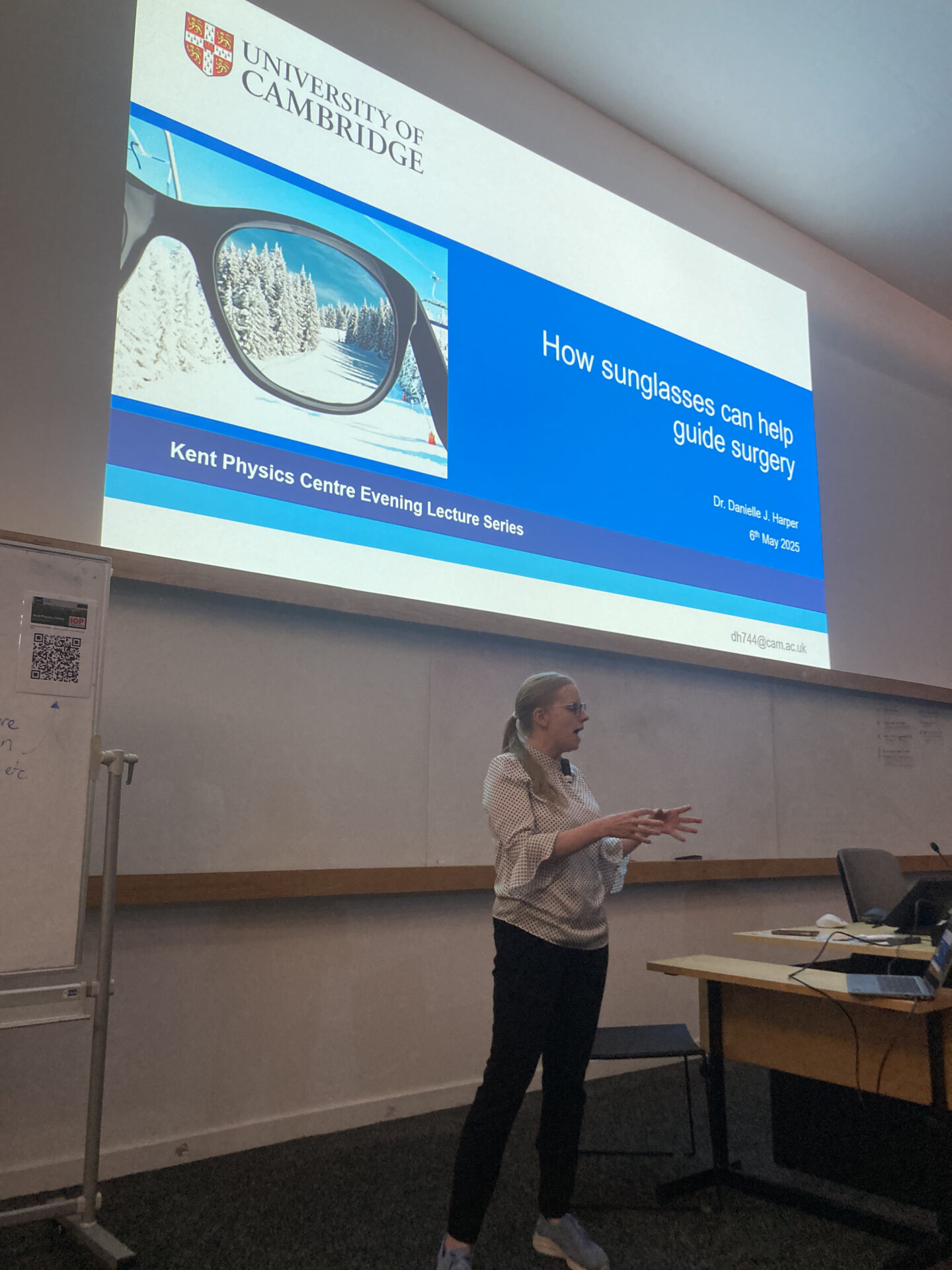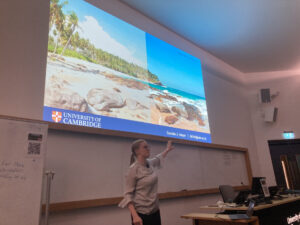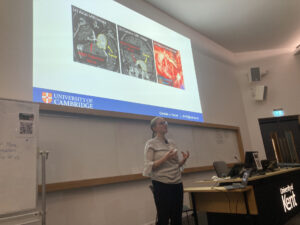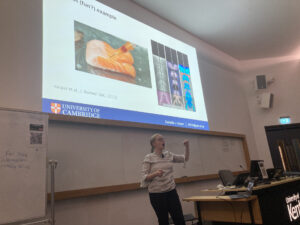
Kent Physics Centre welcomed Dr. Danielle Harper from the University of Cambridge for the latest instalment of the series of public lectures. Dr Harper's talk was on "How sunglasses can help guide surgery "
Kent Physics Centre welcomed Dr. Danielle Harper from the University of Cambridge for the latest instalment of the series of public lectures. There were around 30 attendees to this talk.
After completing her PhD at the Medical University of Vienna, Dr. Harper joined the Wellman centre for Photomedicine. It was here she worked on a range of clinical applications for the usage of laser systems. Using optical probes can provide a wealth of crucial information without the need for invasive procedures. This focus on optical probes in clinical applications forms the basis for “How sunglasses can help guide surgery”.
Those of you who own a pair of polarised sunglasses might already be familiar with the reduction in glare, or improved contrast and visibility, offered by these lenses. On a bright, sunny day the reflected light hitting your eyes can be quite overwhelming. This is because the light is coming from a multitude of directions, meaning there is a lot of light hitting your eyes. Polarised sunglasses address this issue by only allowing light from specific directions to pass through the lens. A fun experiment to try is turn your polarised sunglasses 90 degrees and see that the glare is worsened! The difference that 90 degrees can make will become important again shortly.

How does this relate to surgery and clinical applications? The problem Dr. Harper set out to solve is how to improve the identification of tissue during complex surgeries. Brain surgeons are often faced with a homogeneous mass of tissue, and it is critical to distinguish which parts are harmful from those which are essential for normal function. At particular risk of misidentification in a brain surgery are nerves. Broadly speaking, nerves are composed of many tubes, or fascicles, running the length of the nerve, surrounded by an epineurium. These fascicles are perpendicular to the surrounding epineurium. Just like with the polarised sunglasses, this perpendicular alignment can be exploited by polarised light.

Dr. Harper’s research has been looking into the effectiveness of combining polarised light with optical coherence tomography, OCT, techniques. You might have been offered an OCT scan at your last eye test (Dr. Harper recommends getting these scans!). The power of OCT is that it provides a non-invasive method for imaging tissue. A scan will take “slices” of your eye, for example, which can then be compiled to form a three dimensional image that provides much greater information about the overall health of the tissue. Adding polarisation to this can provide even greater detail about the structure of the tissue.
Returning back to the problem of tissue identification in brain surgery, using the combination of OCT and polarised light, surgeons can see the structure of the nerves in the brain (seeing the difference between the fascicles and the epineurium), and have confidence in which tissues can safely be removed.

Join us again on June 3rd for the last public lecture of the year, where we welcome Emeritus Professor of Space Science, Mark Burchell for “Exploring the Solar System via Hypervelocity Impacts”.